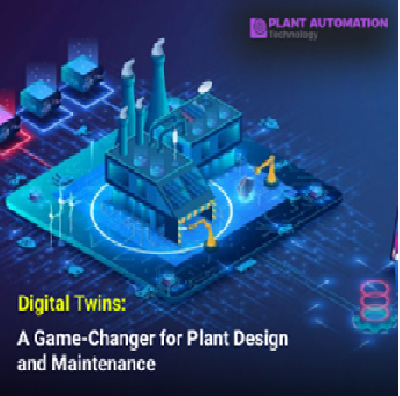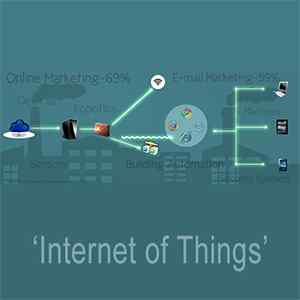Digital Twins: A Game-Changer for Plant Design and Maintenance

In today's rapidly evolving industrial landscape, the concept of digital twins has emerged as a true game-changer for plant design and maintenance. Digital twins are virtual replicas of physical assets or systems, and they're revolutionizing the way we plan, construct, and manage industrial facilities. In this article, we'll explore what digital twins are, how they work, and the profound impact they are having on plant design and maintenance.
Understanding Digital Twins
Imagine having an identical digital copy of a physical object or system. This is essentially what a digital twin is – a virtual representation that mirrors a real-world counterpart. It's like having a ghostly, but extremely detailed, twin of your physical plant or machinery.
Developing a digital twin requires the utilization of cutting-edge technologies such as sensors, data analytics, and 3D modeling. These sophisticated tools are instrumental in gathering and merging real-time data from the physical entity into its digital replica. Consequently, all alterations, vibrations, and operations in the physical realm are mirrored within the digital twin. This synchronized real-time data enables us to comprehensively monitor and scrutinize the performance of the physical asset in a manner previously unattainable.
Digital Twins in Plant Design
When it comes to plant design, digital twins are transforming the way we approach the entire process. Traditionally, designing a manufacturing facility or a power plant was a complex and time-consuming task. Engineers had to rely on physical prototypes and two-dimensional drawings to plan, build, and test these facilities. This often led to unexpected challenges and costly modifications once construction was underway.
With digital twins, designers can create a detailed 3D virtual model of the plant. This digital model is more than just a static representation; it's a dynamic simulation that can mimic the behavior of the actual plant. Engineers can run simulations to test various scenarios, assess how different factors impact the plant's performance, and fine-tune the design accordingly.
This dynamic aspect of digital twins not only saves time but also reduces costs significantly. It allows for early detection of design flaws and optimization of the plant's layout. For example, a digital twin of a chemical processing plant can simulate how changes in temperature and pressure affect the efficiency of the processes. Designers can then make adjustments to ensure optimal performance.
Enhanced Maintenance with Digital Twins
Once a plant is operational, digital twins continue to be valuable assets. They play a vital role in maintenance by providing real-time insights into the condition of equipment and systems. In the past, maintenance was often reactive – fix it when it breaks. But with digital twins, maintenance becomes proactive and predictive.
Digital twins continuously collect data from sensors placed throughout the plant. These sensors monitor variables like temperature, pressure, vibration, and wear and tear on machinery. This data is instantly reflected in the digital twin, allowing engineers to monitor the health of the plant in real time. If a piece of equipment begins to show signs of stress or wear, it's immediately flagged, and maintenance can be scheduled before a breakdown occurs. This not only prevents costly downtime but also extends the lifespan of the equipment.
Furthermore, digital twins can assist maintenance crews by providing detailed, step-by-step instructions for repairs or replacements. It can even offer augmented reality (AR) guidance, overlaying digital information on the physical equipment to make maintenance tasks easier for technicians. This means that even less-experienced personnel can perform complex maintenance tasks with the help of digital twins.
Remote Monitoring and Management
One of the most significant advantages of digital twins is the ability to remotely monitor and manage industrial facilities. With the power of the internet and cloud computing, plant managers and engineers can access their digital twins from anywhere in the world. This level of remote connectivity is particularly valuable for large, complex facilities or plants located in remote areas.
Plant managers can use digital twins to keep a watchful eye on their operations in real-time. They can identify bottlenecks, inefficiencies, or maintenance needs and take action without physically being on-site. This remote access is especially crucial in situations like the COVID-19 pandemic when travel restrictions and lockdowns make on-site inspections challenging.
Energy Efficiency and Sustainability
Digital twins also contribute to the sustainability of industrial operations. By continuously monitoring energy consumption and optimizing processes, they can help plants reduce their carbon footprint. For example, a digital twin of a manufacturing facility can identify energy-hungry processes and suggest changes to make them more efficient. This not only lowers operational costs but also aligns with environmental sustainability goals.
Additionally, digital twins can help with resource management. They can track the usage of raw materials and water, identifying areas where waste can be reduced or recycled. This sustainability focus is not just about being environmentally responsible but also about improving the bottom line by reducing operational expenses.
Challenges and Considerations
While digital twins have enormous potential, their implementation isn't without challenges. First and foremost, it requires a significant investment in technology and infrastructure. Sensors, data analytics software, and 3D modeling tools can be expensive, and not all companies may have the budget for a comprehensive digital twin system.
Security is another concern. Protecting the data and the digital twin itself from cyberattacks is critical. Industrial facilities are prime targets for cyber threats, and a breach could have severe consequences.
Moreover, integrating digital twins into existing plant operations can be a complex process. Legacy systems and equipment may not be immediately compatible with modern digital twin technologies, which means retrofitting may be necessary.
The Future of Digital Twins
The future of digital twins is in a state of continual evolution, with their full potential yet to be fully harnessed. With the progression of technology, digital twins will undergo further refinement, providing increasingly precise depictions of physical assets and systems. Artificial intelligence and machine learning will assume more significant roles, enabling digital twins to become more intelligent and capable of autonomous decision-making.
The integration of digital twins with other advancing technologies, notably the Internet of Things (IoT), will elevate their potential. IoT devices have the capacity to furnish increasingly detailed data, enabling a more intricate and precise portrayal of the physical world in the digital twin.
In summary, digital twins unquestionably represent a groundbreaking development in the realms of plant design and maintenance. They simplify the design phase, enhance maintenance efficiency while reducing costs, and actively promote sustainability. As technological progress continues, the promise of digital twins will expand, establishing them as an essential tool for industries striving to excel in the digital era. If your organization has yet to delve into the advantages of digital twins, now is the opportune moment to contemplate how this technology could transform your operations and secure a competitive edge in today's industrial landscape.







